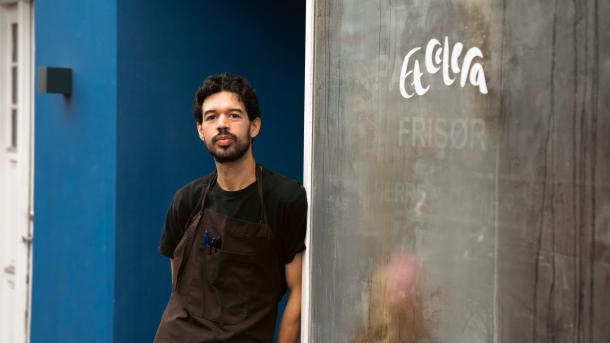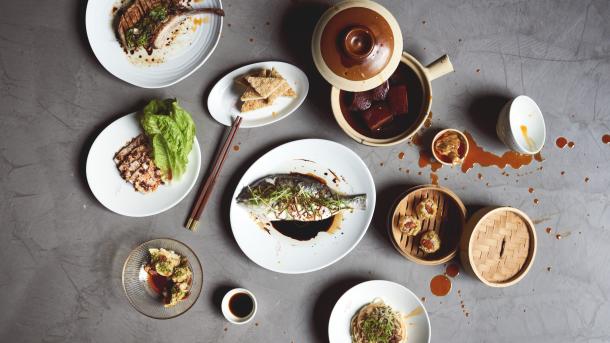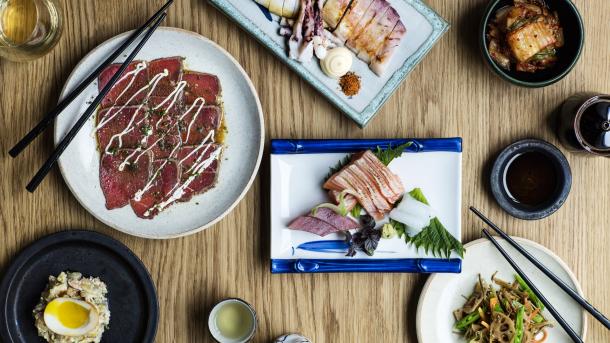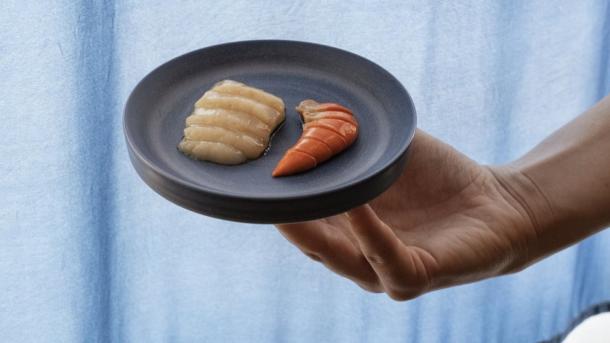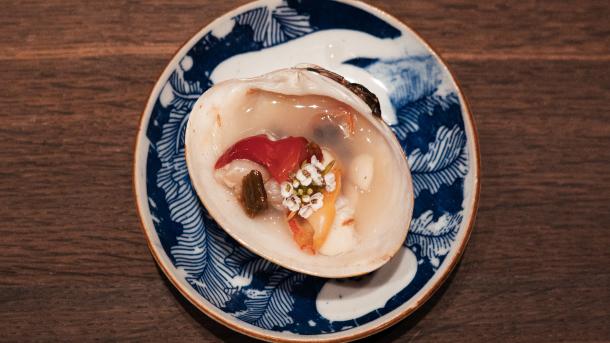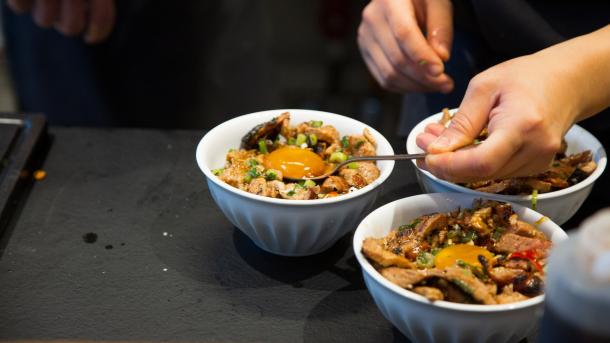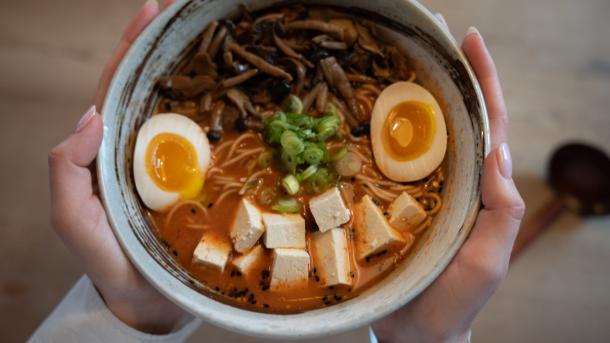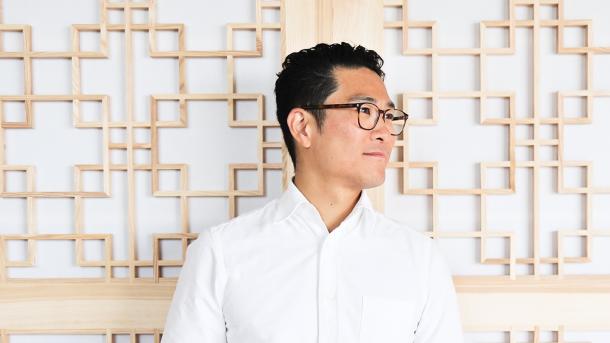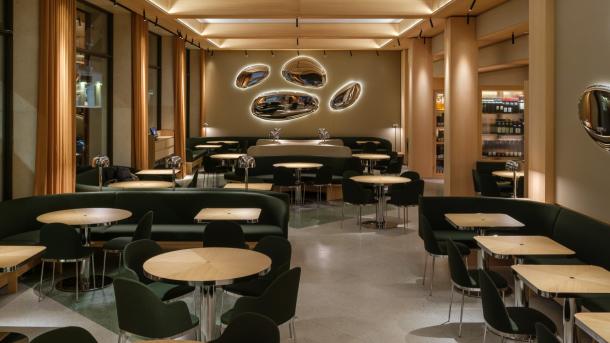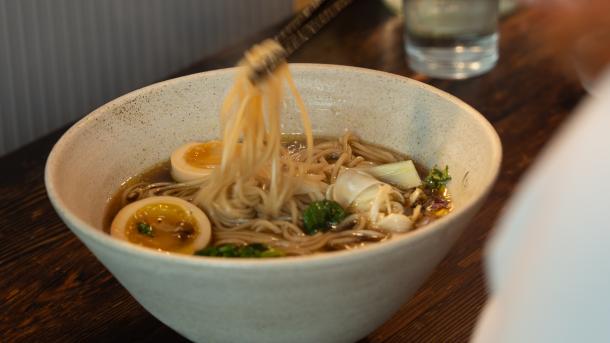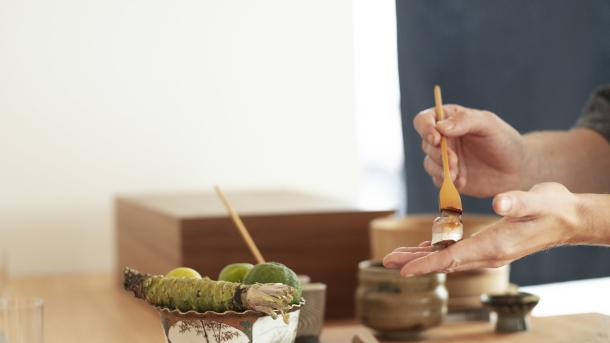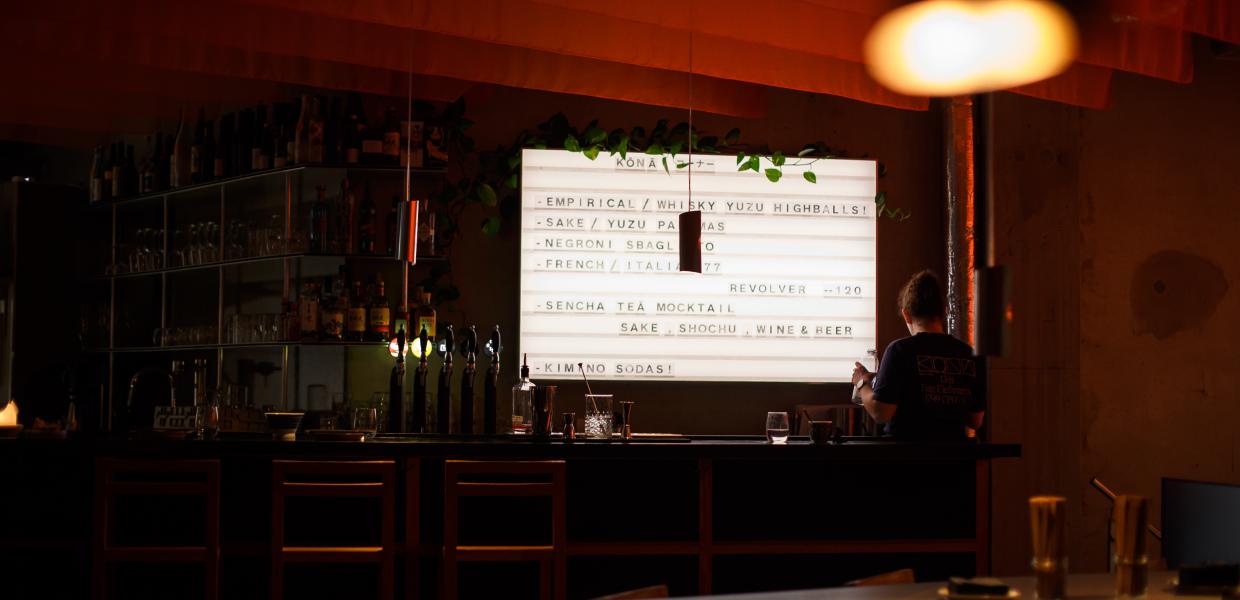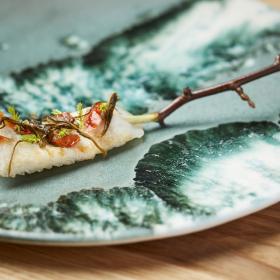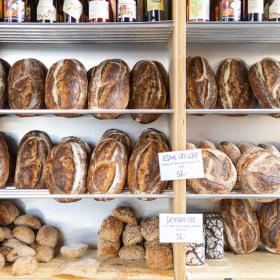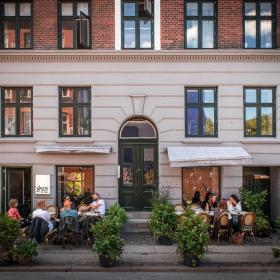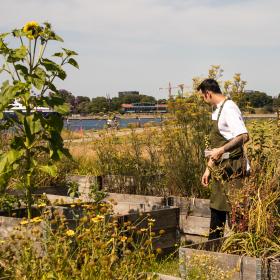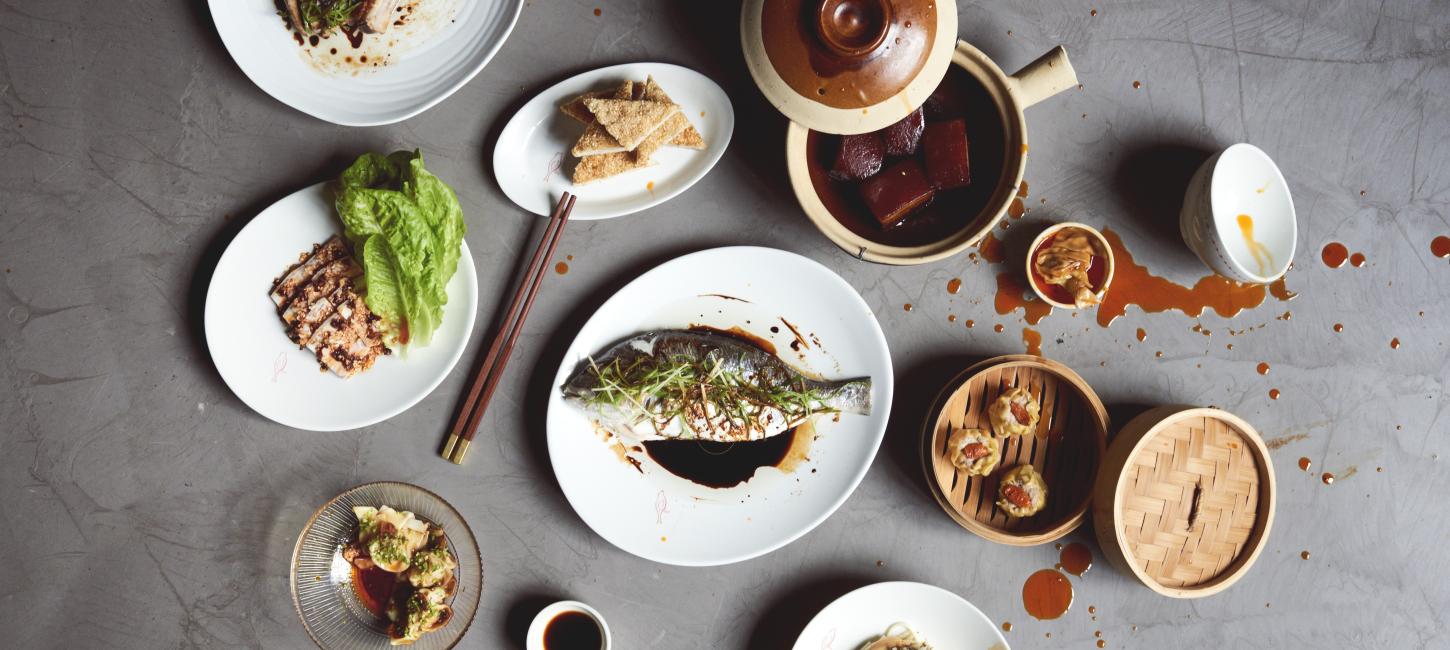
Copenhagen's new Asian wave
Some of the most talented chefs in Copenhagen are leading a new wave of Asian restaurants, combining principles from the New Nordic Food Manifesto with Asian traditions.
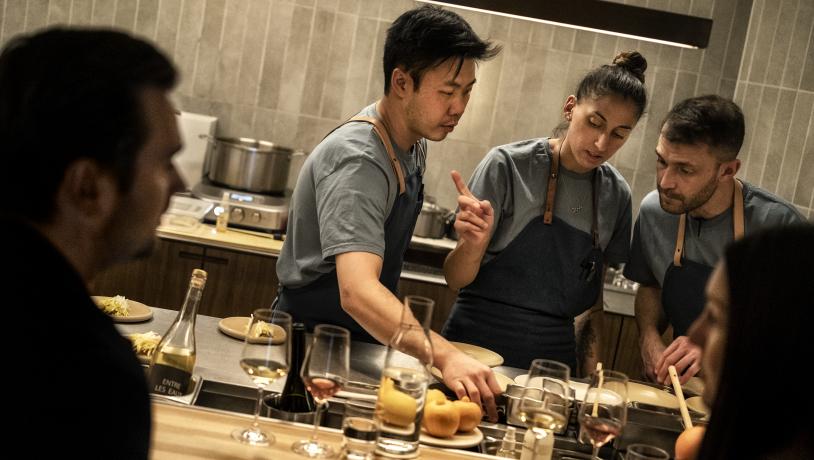
Photo:Per-Anders Jörgensen
Copenhagen’s New Asian Wave is being led by some of the most talented chefs in town: Michelin chefs, central figures for the New Nordic Food Movement, including former noma chefs are all queueing up to open their own take on Asian cuisine – alone in 2022, 8 new Asian restaurants opened in Copenhagen.
A few examples could be:
- Mads Battefeld, the previous sous chef at the Michelin-starred restaurant Henne Kirkeby Kro, now running the most ambitious sushi project in Northern Europe, Sushi Anaba.
- Philip Inreiter, a former noma chef, who is behind the most popular ramen joint in Copenhagen, Slurp Ramen joint.
- Jonathan Tam, Relæ’s former sous-chef, whose Cantonese-inspired Restaurant JATAK was awarded a Michelin star only 6 months after its opening in 2022.
You will find a full overview of the chefs behind Copenhagen's New Asian wave at the end of the list
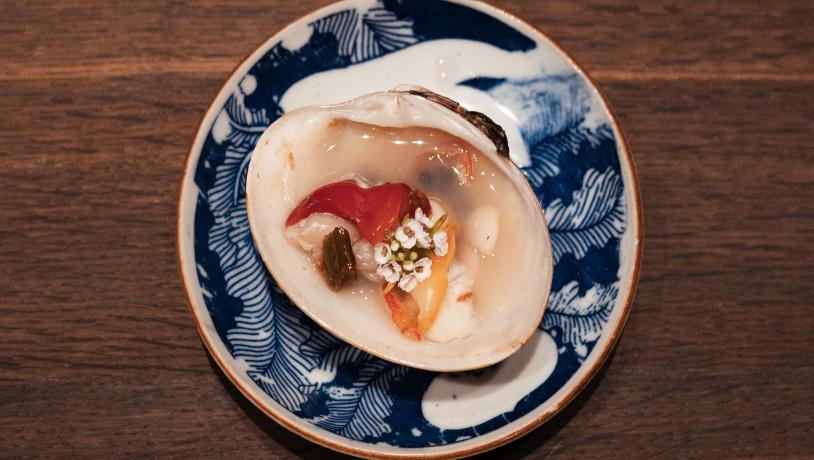
Photo:Filip Gielda
New Nordic meets Asian cuisine in Copenhagen
The New Nordic Food Manifesto was conceived in 2004 and changed the culinary landscape of Copenhagen forever. Its principles touched upon the seasonality and the local origin of the produces but always aimed at "combining the best in Nordic cookery and culinary traditions with impulses from abroad" (source: New Nordic Food Manifesto, principle no. 8).
Chefs from all over the world travelled to Copenhagen to join the movement, bringing their local cuisines with them. At the same time, chefs from the New Nordic Movement travelled all over the world looking for inspiration. Learning from Asia, the best restaurants in Copenhagen started experimenting with local ingredients such as Danish seaweed to enhance umami, or with fermentation in their food labs - a practice, which is now strongly connected to nordic cuisine, but which was not common at its very beginning.
To understand the strong connection between the New Nordic Food Movement and Asia, one can look at five times best restaurant in the world, noma (source: San Pellegrino's World's 50 best). The whole restaurant moved temporarily to Japan in 2015, and now again in 2023, experimenting with Japanese ingredients and running pop-ups.
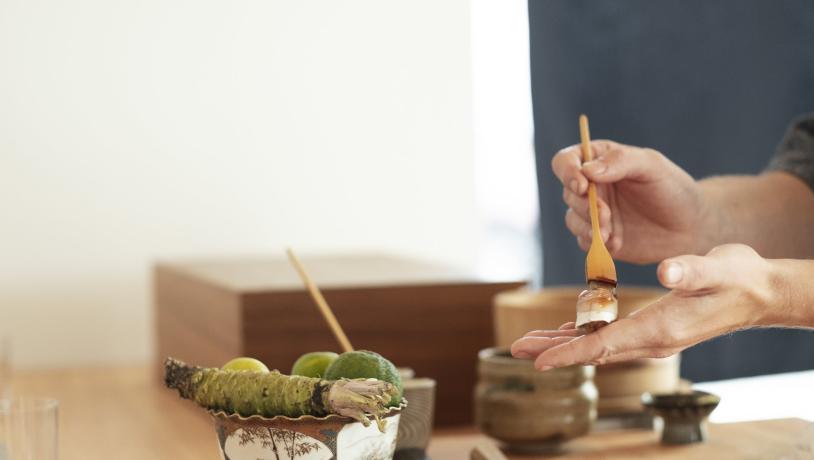
Photo:Mads Krabbe
What defines Copenhagen’s New Asian Wave?
Copenhagen’s New Asian wave is growing spontaneously, without a manifesto or any set of rules for chefs to follow. However, this new food trend seems to be defined by some common elements.
Chefs are combining techniques and traditions from Asian cuisines, especially the Japanese, but also Korean and Chinese, with some of the principles from the New Nordic Food Movement - seasonality and locally sourced fish and vegetables.
The variety is impressive, as it suddenly spans from breakfast canteens to Izakayas, to ramen joints, to traditional omakase, to kappo cuisine - combined with local trends such as natural wine (a trend which Copenhagen has been sharing with Tokyo for years now), Scandinavian design, and two common denominators: an informal atmosphere and focus on high-quality produce.
The result of 20 years of culinary and cultural exchange is very tangible in Copenhagen today. The number of new Asian restaurant openings is high, but the real story is not in the quantity but in the quality of the chefs behind them, which has never been so high as it is today.
Et cetera
Located in an old hairdresser and tugged in between shops on the up-and-coming square Skjolds Plads in Nørrebro, you will find the intimate canteen and wine shop, Et cetera. A place that makes you confident that you have found a hidden gem. Inspired by Japanese and mainly Korean cuisine, Et cetera serves alternative breakfast and lunch dishes and is especially famous for its fluffy egg sandwich. Everything, even the noodles, is made entirely from scratch by the couple Nina, Danish-Korean and Joel, who is Swedish and a former chef at the vegan restaurant Ark in Nørrebro.
Goldfinch
Traditional Cantonese food made with high-quality and ethically sourced Chinese ingredients is emphasized at the restaurant Goldfinch located in a backyard at Kongens Nytorv. The former assistant head chef at Geranium Australian, Will King-Smith, is behind the opening of Goldfinch. A place inspired by his childhood memories of the Chinese food he ate in Australia, where Chinese food, to a greater extent, is associated with good craftsmanship. At Goldfinch, the dishes are both made to be shared, as the menu is a mixture of small to medium-sized dishes and bigger plates of vegetables, fish, meat, noodles and rice. Goldfinch also treasures the late-nighters serving a small late-night menu on Thursdays, Fridays and Saturdays from 22-24, a more creative menu changing every night. In collaboration with the bartender Harry Bell, from the cocktail bar TATA, the cocktail menu has been created to accompany the flavours of the Cantonese food and will change as frequently as the menu and served until two in the morning in the weekends.
Jah Izakaya & Sake Bar
The informal and authentic gastropub Jah Izakaya & Sake Bar was one of the first movers within The New Asian Wave and introduced Copenhageners to the concept of Japanese soul food in Vesterbro’s lively hub. It is an Izakaya-inspired kitchen meaning the dishes range from fine dining to late-night street kitchen with cold and warm dishes made to be shared and served simultaneously. The menu is local and seasonal based, with ingredients from organic and biodynamic farms, free-range meat and locally and fair-caught fish and shellfish, all prepared with Japanese techniques. As their name implies, Jah Izakaya & Sake Bar also offers a broad selection of sake ranging from classical to more unfiltered natural sake.
JATAK
Previous chef de partie for 3 years at noma and head chef for 6 years at Relæ, Canadian-born Jonathan Tam decided to combine Asian flavours with Nordic cuisine at his Michelin-starred restaurant JATAK in Nørrebro. Nearly trying to hide in the busy neighbourhood of Nørrebro behind curtains and no signs, just a candle outside, the restaurant serves food inspired by the Cantonese and Vietnamese flavours he grew up with. Here Tam combines them with Nordic techniques and seasonally local produce, accompanying the food with natural wine - a must in Copenhagen - and fermented kombucha for the non-alcoholic pairing. At JATAK, the menu is different depending on which seat is booked. In the actual restaurant, a 7-course menu will be served, where the kitchen ensures the guests try all of their signature dishes. Guests can also be seated at their kitchen counter, where they have a clear view of the kitchen and are served a more extensive menu with challenging and experimenting dishes as well. The restaurant was instantly hyped after its opening in January 20022, when noma-founder René Redzepi recommended their classic Hong Kong egg tart on his Instagram. And in July 2022, six months after the opening, JATAK received its first Michelin star.
Juju
At the Korean-inspired eatery Juju in Østerbro, the former chef at noma, Kristian Bauman, has explored his Korean roots and combined them with his expertise in Nordic food while focusing on locally sourced ingredients. The menu offers casual and fun lunch and dinner dishes, which are easy to share. In addition, the new Asian wave has also resulted in new kitchen hours, and at Juju, the eatery is only open from Monday until Friday and closed during the weekends.
Kappo Andō
At Kappo Andō, or simply just Andō in Østerbro, the love for the Japanese kitchen is pursued. The restaurant is run by sommelier Henrik Andō Levinsen and his Japanese wife, chef Akiko Andō Levinsen. They met when Henrik worked at a sake distillery in Japan and in collaboration with Mads Battlefeld, the man behind Copenhagen’s most ambitious sushi restaurant - Sushi Anaba, they have combined their mutual passion for the Japanese kitchen and craftmanship. Kappo Andō is inspired by the Japanese kappo kitchen and combines the informal izakaya bar with the more formal kaiseki temple kitchen based on long ritual menus. With a strong focus on local ingredients and Japanese techniques, the restaurant serves seasonal seafood, vegetable dishes, and unique cuts of poultry and meat offered as an 11-serving or 15-serving set menu. While working in Japan, Henrik got an education as a master sake sommelier, which reflects on the impressive selection of natural wines, sake, and hot sake to be found on the drinks menu. It is possible to enjoy their food at regular tables or at their counter bar, where you overlook the kitchen preparing the food for you.
Propaganda
At Propaganda, you will find a South Korean-influenced kitchen run by the former intern at noma Youra Kim and Riccardo Macron, the man behind one of the hotspots for people from the food industry in Copenhagen - Barabba. The food is inspired by Youra Kim’s childhood in South Korea, where she tried a lot of different South Korean food as a result of moving around many times and exploring different parts of the country. Propaganda tries to deviate from the traditional and instead has a non-dramatic approach focusing on Korean-inspired fun food in collaboration with local Danish farmers. The restaurant embraces the casual late dinner and opening hours. Here it is possible to come after dinner for snacks and drinks, or it can be a place to eat before exploring Copenhagen nightlife. Being run by Riccardo Macron, the former sommelier at Restaurant 108, the restaurant also houses a natural wine shop, which has one of the most unique selections in Copenhagen in all price ranges.
Ramen to Biiru
Mikkeller, currently one of the world’s most renowned craft beer brands and originally from Copenhagen, started pairing their beer with food when opening Ramen to Biiru, also being pioneers in introducing the Asian kitchen to Copenhagen. Building on a very informal Japanese style, guests simply walk into the restaurant and order their food from a machine, where they choose which kind of ramen they want. Afterwards they bring their ticket to the open kitchen and watch as the kitchen prepare their ramen. Ramen to Biiru not only sell Mikkeller beer from draft, but also houses a vending machine, where canned Mikkeller beer can be bought.
Restaurant Koan
From April 4th, the Korean-inspired restaurant Koan will open its doors by the Copenhagen waterfront at Langeliniekaj. Created by former noma chef Kristian Baumann, also the owner of the Korean eatery Juju at Østerbro, the restaurant reflects traditional Korean cooking techniques and flavours and combines it with ingredients of the Nordic season. For the expression of the tasting menu, Kristian Bauman has explored his South Korean roots and the different cuisines to be found there. It is food which has inspired Kristian on his journey, like the afternoon snack Kkwabaegi – A Korean type of bread. The team behind Koan has spent almost three years refining their expression, authentic, traditional techniques and dining concepts. For the wine, Kristian Bauman has collaborated with sommelier Lasse Peder Nielsen, who has put together two different wine menus, one non-alcoholic pairing and a pairing built around Korean Sool, which is a common term for Korean alcohol. To make the restaurant visit a holistic journey, the menu is served in art pieces created by a Korean potter, who have collected pottery fragments from China’s Qing Dynasty and mixed it with new porcelain.
Restaurant Levi
Restaurant Levi explores the unique fusion of the traditional Japanese and Italian kitchen, believing both cuisines share the same DNA in transforming high-quality, simple, season-based ingredients into something spectacular. The fusion lives on in the restaurant’s art deco interior, where designer Johannes Torpe has combined traditional old Italy with the sophistication of modern Japan. The kitchen is run by Sicilian Gabrielle Rizzo, who has a past at Geranium, Jordnær. As a result of curiosity and constant seeking of new ways to surprise their guests, the menu changes weekly. The founders, Jesper Boelskifte and Peter Traboth are both wine connoisseurs and have a past as wine advisers for Alchemist and Geranium. Together, they fill the basement with wines they like. Inspired by the grappa master Romano Levi, they have a large selection of grappa, an Italian grape-based liquor, in addition to their wine. In 2022, the restaurant was also named the best restaurant in Copenhagen by the Danish newspaper Berlingske Tidende.
Slurp ramen joint
Slurp ramen joint opened in 2017 with the purpose of serving the best ramen in Scandinavia. It was originally started by Philip Inreiter, who previously was a part of the noma team and wanted to introduce Copenhagen to the warmth of ramen after travelling to Japan. At slurp, the ramen is always made with handmade noodles, seasonal vegetables and home-cooked broth. Still, the kitchen constantly experiments with new flavours and toppings, making Japanese ramen in a European and Danish context. The joint is located in Nansensgade and is known for its long queues in the street due to its popularity.
Sushi Anaba
With only eight seats and two seatings per night from Wednesday to Saturday, you will find the most ambitious sushi restaurant at Sushi Anaba in Nordhavn. Opened by Mads Battefeld, a previous sous chef at the Michelin-starred restaurant Henne Kirkeby Kro, who spent one month every winter in Japan to learn everything about Japanese cuisine and the craftsmanship behind it. Mads Battlefeld was one of the few Western chefs allowed to work as an apprentice in the legendary sushi restaurant Izumi in Toyama and Michelin starred Hakkoku in Tokyo under Hiroyuki Sato. An experience which has led to the creation of Sushi Anaba, the only place in Copenhagen that serves sushi omakase. This means that the guests leave it to the chef to decide on the meal served, making the sushi an experience to explore. The seafood used is locally caught from Denmark, The Faroe Islands, Norway, and Iceland, as well as sustainably caught tuna from Portugal. Mads has a close relationship with Danish fishermen at the fish markets, which he visits every morning to source the best fish and shellfish to prepare the same day at the restaurant. The sushi is prepared and served in front of the eight guests seated at their counter as they do it in Tokyo. In addition to their counter, the restaurant also has a private tatami room, where the guests are seated on traditional tatami mats, seating 4 to 6 guests at a time. The beverage menu reflects Mads’ background as a wine and sake sommelier with a selection of rare sake, unique wines, beers, teas, and infusions.
Facts about Copenhagen's New Asian Wave
- 8 Asian restaurants by top Copenhagen chefs opened alone in 2022.
- Restaurant JATAK was awarded a Michelin star only 6 months after its opening in 2022.
- The variety spans from breakfast canteens to izakayas, ramen joints, traditional omakase, to kappo cuisine.
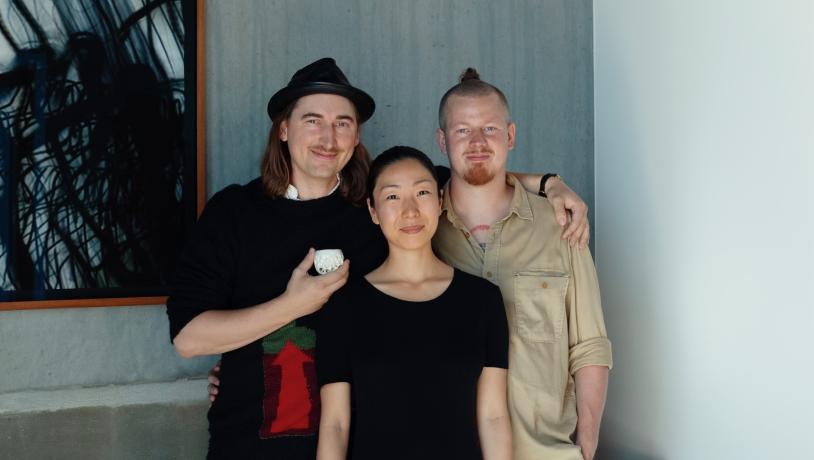
Photo:Kappo Andō / Sushi Anaba
Who are the people behind Copenhagen’s New Asian Wave?
- Et Cetera: by Joel James (SE), former chef at the rooftop farm restaurant GRO spiseri and at ARK, Green Michelin star, vegan fine dining.
- JATAK: by Jonathan Tam (CA), former chef de partie at noma and head chef at restaurant Relæ for six years.
- Juju: by Kristian Bauman, a Korean-born Dane and a former chef at noma, Relæ and Manfreds and chef-owner of restaurant 108.
- Kappo Andō: by sake sommelier Henrik Andō Levinsen (DK), Akiko Andō Levinsen (JPN) and Mads Battlefeld (DK), the owner of Sushi Anaba.
- Kōnā and Slurp ramen joint: by Philipp Inreiter (AT), a former chef at noma.
- Propaganda: by former intern at noma South-Korean Youra Kim and Riccardo Macron the owner of Barabba - a hotspot for people in the food industry.
- Ramen to Biiru: by Mikkel Bjergsø (DK), the co-founder of the Copenhagen micro brewery Mikkeller.
- Restaurant Levi: created by Jesper Boelskifte (DK) and Peter Traboth (DK) both previous wine advisers for Alchemist and the world’s best restaurant Geranium. The head chef is Andrea Calducci (IT), a previous chef at The Fat Duck in London.
- Sushi Anaba: by Mads Battlefeld (DK), former sous chef at the Michelin-starred restaurant Henne Kirkeby Kro.
Press photos: New Asian Wave

Senior Manager – Press & PR
